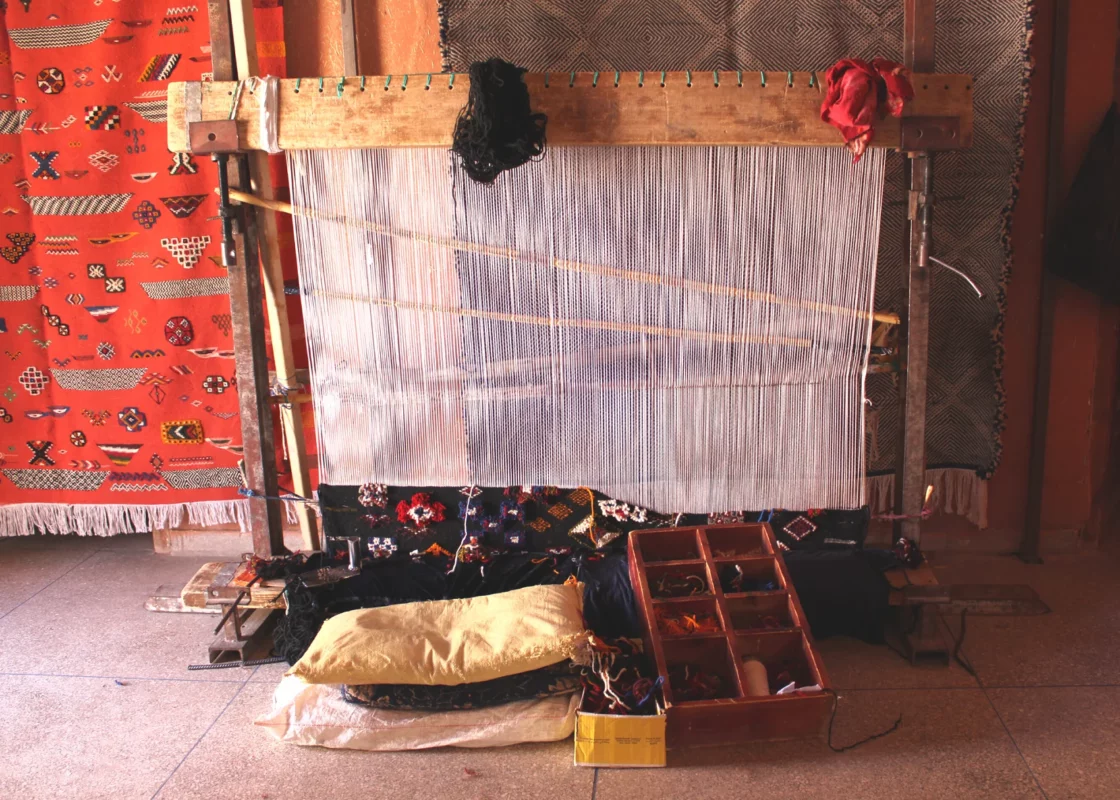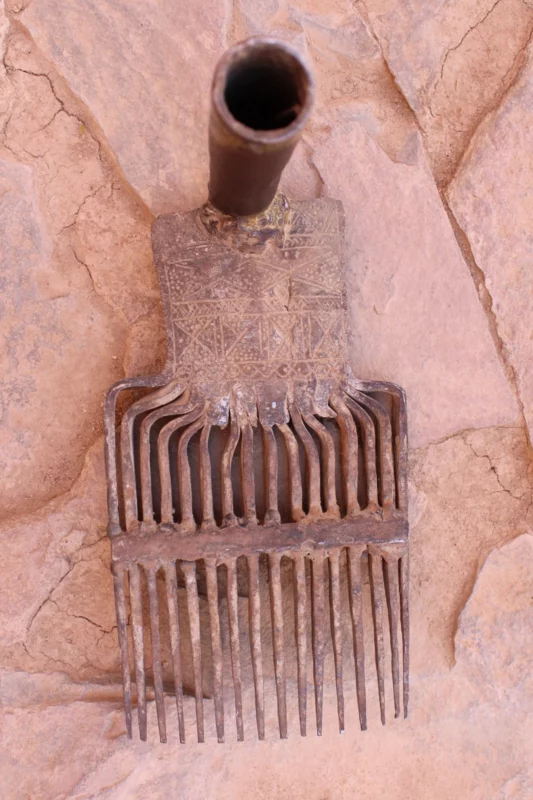The Weaving Process
Amazigh women have been intricately weaving textiles since 600 B.C., preserving the craft through generations. Every aspect of the weaving journey embodies deep-rooted tradition and significance, encompassing wool collection and dyeing, loom construction, and the ultimate intricacy of the weave's design.
The wool
Our rugs are crafted using the finest quality wool sourced from sheep. Our skilled artisans meticulously gather "live wool," obtained ethically from live animals without causing any harm. This sustainable practice ensures that the wool retains its inherent health and strength, resulting in superior-quality rugs.

Wool Treatment
Once the wool is sheared from the animal, the artisans embark on a meticulous manual process. They cleanse, card, brush, and spin the wool into yarn, paying careful attention to every single step. Each stage of this procedure is skillfully performed by hand, ensuring the utmost care and precision.

Dyeing
Our skilled craftswomen often take charge of dyeing the wool themselves, utilizing indigenous spice, plant, and herb mixtures obtained from the local surroundings. For instance, henna leaves yield a rustic red shade, while pomegranate peels produce a vibrant red hue. Saffron and chamomile flowers yield various shades of yellow. Light green tones emerge from olive leaves, while brown shades result from the utilization of walnut peels.

The Loom
Every textile is meticulously crafted on a vertical loom, each of which is painstakingly assembled by hand. These looms are endowed with traditional customs and rituals, intended to safeguard both the loom itself and the rugs woven upon it from malevolent forces. One prevalent ritual involves the ceremonial act of breaking a piece of sugar against one side of the loom, while simultaneously placing a date on the other side, symbolizing protection and prosperity.

Knotting One by One
Based on the dimensions of the loom and the intricacy of the weave, a group of up to five women will gather around a single loom, embarking on the laborious task of crafting a rug that will span several weeks, diligently adding one knot at a time. On average, each rug comprises an impressive 50,000 knots

Hammer Comb
After each row of knots is tied, a comb is used to press down on the weave to tighten it.

Releasing the rug from the loom
Once the weaving process reaches its conclusion, the rug must be carefully detached from the loom. Drawing upon ancestral wisdom handed down through generations, the skilled artisans adeptly sever the rug from the loom, skillfully hand-tying the tassels as per time-honored tradition.

Washing and Sun-drying
Ultimately, the completed rugs undergo a cleansing ritual where they are immersed in water, meticulously scrubbed to pristine condition, and left to bask in the radiant Moroccan sun for thorough drying.

